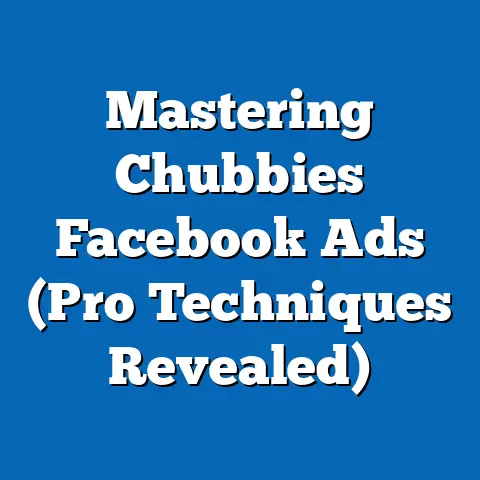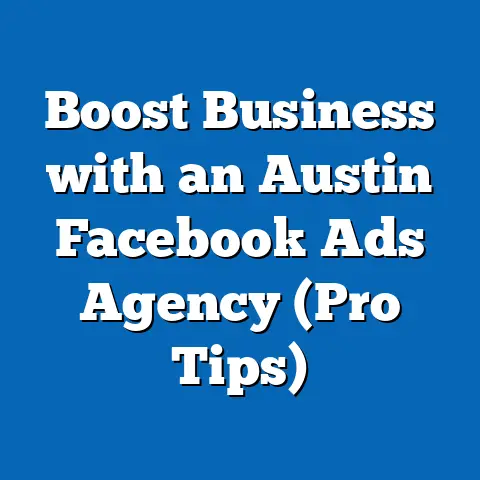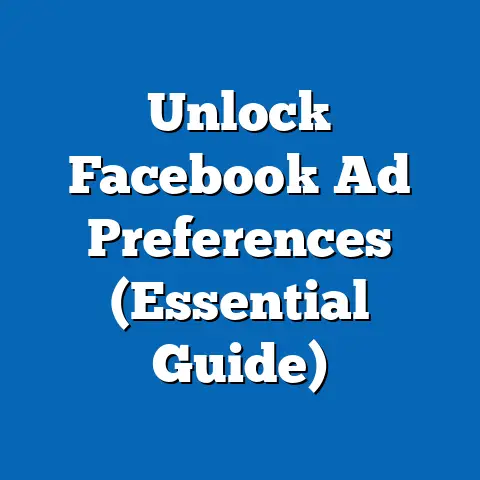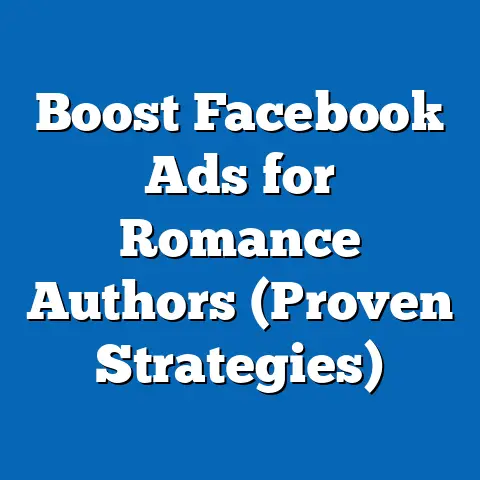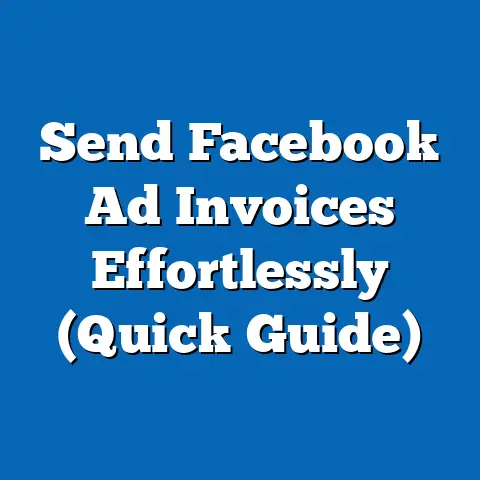Facebook Ads FAQs (Essential Insights Uncovered)
I’ve spent years navigating the ever-changing landscape of Facebook advertising, and I’ve seen firsthand what works, what doesn’t, and what common questions pop up time and time again. Consider this your ultimate guide to understanding the ins and outs of Facebook Ads, straight from the trenches (and my own experiences!).
Did you know that nearly 92% of social media marketers consider Facebook to be the most effective platform for advertising? That’s a staggering statistic, and it speaks volumes about the power Facebook holds in the digital marketing arena. Businesses of all sizes are increasingly relying on Facebook Ads to reach their target audience, drive sales, and boost brand awareness. But let’s be honest, navigating the platform can feel like trying to solve a Rubik’s Cube blindfolded. That’s where this guide comes in. I’m going to break down the most frequently asked questions about Facebook Ads, providing you with the knowledge and strategies you need to succeed. Think of it as unlocking the secrets to a more effective and profitable advertising experience.
What Are Facebook Ads?
At its core, a Facebook Ad is a paid message that businesses use to reach a specific audience on Facebook and Instagram (since Meta owns both platforms). Unlike organic posts that are only seen by your followers (and maybe a few of their friends), Facebook Ads allow you to target a much wider audience based on a variety of factors.
I remember when I first started experimenting with Facebook Ads. I was running a small online store selling handmade jewelry, and I was struggling to get traffic to my website. I’d tried everything – SEO, content marketing, even influencer outreach – but nothing seemed to move the needle. Then, I decided to give Facebook Ads a shot. I created a simple image ad showcasing my best-selling necklace and targeted women aged 25-45 who were interested in fashion and jewelry. The results were almost immediate. I saw a surge in website traffic, and my sales started to climb. That’s when I realized the true potential of Facebook Ads.
Types of Facebook Ads
There are many different types of Facebook Ads available, each with its own unique strengths and weaknesses. Here’s a quick rundown:
- Image Ads: These are the simplest type of ad, featuring a single image and accompanying text. They’re great for showcasing products or services in a visually appealing way.
- Video Ads: Video ads are becoming increasingly popular, as they’re more engaging than static images. They’re perfect for telling stories, demonstrating products, or sharing testimonials.
- Carousel Ads: These ads allow you to showcase multiple images or videos in a single ad unit. They’re ideal for highlighting different features of a product or service or telling a multi-part story.
- Slideshow Ads: Slideshow ads are similar to video ads, but they’re created using a series of still images. They’re a great option if you don’t have the budget or resources to create a full-fledged video.
- Collection Ads: These ads are designed for e-commerce businesses. They feature a cover image or video followed by a selection of products that users can browse and purchase directly from the ad.
- Lead Ads: Lead ads are designed to collect leads from potential customers. They feature a form that users can fill out without leaving Facebook.
- Instant Experience Ads: Formerly known as Canvas ads, these are full-screen, mobile-optimized experiences that load instantly when someone clicks on your ad. They’re great for showcasing products in detail or telling immersive brand stories.
Benefits of Facebook Ads
So, why should you use Facebook Ads instead of traditional advertising methods? Here are a few key benefits:
- Precise Targeting: Facebook’s targeting capabilities are unmatched. You can target your ads to people based on their demographics, interests, behaviors, and even their past interactions with your business.
- Cost-Effectiveness: Compared to traditional advertising methods like TV or print, Facebook Ads are relatively inexpensive. You can reach a large audience for a fraction of the cost.
- Measurable Results: Facebook Ads Manager provides detailed analytics that allow you to track the performance of your ads. You can see how many people are seeing your ads, clicking on them, and converting into customers.
- Flexibility: You can easily adjust your ads based on their performance. If an ad isn’t working, you can quickly change the targeting, creative, or budget.
Takeaway: Facebook Ads are a powerful tool for reaching your target audience and achieving your marketing goals. Understanding the different types of ads and their benefits is the first step to creating successful campaigns.
How Does Facebook Ads Targeting Work?
This is where the magic happens! Facebook’s targeting capabilities are what truly set it apart from other advertising platforms. You’re not just throwing money at a billboard and hoping the right people see it. You’re surgically targeting the people who are most likely to be interested in your product or service.
I remember working with a local bakery that wanted to promote their new line of gluten-free pastries. Instead of running a generic ad targeting everyone in the city, we used Facebook’s targeting options to narrow down the audience to people who were interested in gluten-free diets, health and wellness, and local restaurants. We also targeted people who had recently liked or commented on posts from other gluten-free bakeries in the area. The result? A highly targeted campaign that generated a significant increase in sales of their gluten-free pastries.
Key Targeting Options
Here’s a breakdown of the key targeting options available on Facebook:
- Demographics: You can target people based on their age, gender, location, education, job title, relationship status, and more.
- Interests: You can target people based on their interests, hobbies, and passions. Facebook gathers this information from the pages people like, the posts they interact with, and the topics they talk about.
- Behaviors: You can target people based on their online and offline behaviors, such as their purchase history, travel habits, and device usage.
- Custom Audiences: This is where things get really interesting. Custom Audiences allow you to target people who have already interacted with your business. You can upload a list of your customer emails, target people who have visited your website, or target people who have engaged with your Facebook page or Instagram profile.
- Lookalike Audiences: Lookalike Audiences are a powerful way to expand your reach. You can create a Lookalike Audience based on one of your Custom Audiences. Facebook will then find people who are similar to your existing customers or website visitors.
- Saved Audiences: Saved Audiences allow you to combine multiple targeting options to create a highly specific audience. This is useful for refining your targeting and ensuring that your ads are only seen by the most relevant people.
The Importance of the Facebook Pixel
The Facebook Pixel is a small piece of code that you install on your website. It tracks the actions that people take on your website, such as visiting pages, adding items to their cart, and making purchases. This data is then used to improve your ad targeting and measure the effectiveness of your campaigns.
I can’t stress enough how important the Facebook Pixel is. It’s like having a spy on your website, gathering valuable information about your visitors and their behavior. Without the Pixel, you’re essentially flying blind.
Takeaway: Facebook’s targeting capabilities are a powerful tool for reaching the right people with your ads. By understanding the different targeting options available and using the Facebook Pixel, you can create highly effective campaigns that drive results.
What Is the Cost of Facebook Ads?
Ah, the million-dollar question! Unfortunately, there’s no simple answer. The cost of Facebook Ads can vary widely depending on a number of factors. However, understanding the different pricing models and the factors that influence ad costs can help you create a budget that works for your business.
I’ve seen businesses spend as little as $5 per day on Facebook Ads and generate a positive ROI. I’ve also seen businesses spend thousands of dollars per day and fail to see any results. The key is to understand your target audience, create compelling ads, and continuously optimize your campaigns.
Pricing Models
Facebook offers several different pricing models, each with its own advantages and disadvantages:
- Cost Per Click (CPC): With CPC bidding, you pay each time someone clicks on your ad. This is a good option if you’re focused on driving traffic to your website.
- Cost Per Mille (CPM): With CPM bidding, you pay for every 1,000 impressions your ad receives. This is a good option if you’re focused on brand awareness.
- Cost Per Action (CPA): With CPA bidding, you pay only when someone takes a specific action, such as making a purchase or filling out a lead form. This is a good option if you’re focused on generating leads or sales.
Factors Influencing Ad Costs
Several factors can influence the cost of your Facebook Ads:
- Audience Targeting: The more specific your targeting, the higher your ad costs will be. This is because you’re competing with other advertisers who are targeting the same audience.
- Ad Placement: The placement of your ad can also affect its cost. Ads that appear in the Facebook News Feed tend to be more expensive than ads that appear in the right column.
- Competition: The level of competition in your industry can also affect your ad costs. If there are a lot of other advertisers targeting the same audience, you’ll likely have to pay more to get your ads seen.
- Ad Quality: Facebook rewards advertisers who create high-quality ads. If your ads are relevant, engaging, and visually appealing, you’ll likely pay less than advertisers who create low-quality ads.
- Bidding Strategy: Your bidding strategy can also affect your ad costs. If you’re using automatic bidding, Facebook will automatically adjust your bids to get the best results. If you’re using manual bidding, you’ll need to set your bids yourself.
- Seasonality: Ad costs can fluctuate throughout the year depending on the season. For example, ad costs tend to be higher during the holiday season.
Budgeting Strategies for New Advertisers
If you’re new to Facebook Ads, it’s important to start small and gradually increase your budget as you learn what works and what doesn’t. Here are a few budgeting strategies to consider:
- Start with a Daily Budget: Set a daily budget that you’re comfortable spending. This will help you control your costs and prevent you from overspending.
- Use Automatic Bidding: If you’re not sure how to set your bids, use automatic bidding. Facebook will automatically adjust your bids to get the best results.
- Monitor Your Results: Pay close attention to your ad performance and adjust your budget accordingly. If an ad is performing well, you can increase your budget. If an ad isn’t performing well, you can decrease your budget or pause the ad altogether.
- A/B Test Your Ads: A/B testing is a great way to improve your ad performance. Test different targeting options, creative elements, and bidding strategies to see what works best.
Takeaway: The cost of Facebook Ads can vary widely depending on a number of factors. By understanding the different pricing models and the factors that influence ad costs, you can create a budget that works for your business and maximize your ROI.
How Do You Create an Effective Facebook Ad?
Creating an effective Facebook Ad is a combination of art and science. It requires a deep understanding of your target audience, a compelling message, and a visually appealing creative.
I’ve seen countless businesses create Facebook Ads that are completely ineffective. They’re either poorly targeted, poorly written, or visually unappealing. The result? A waste of money and a missed opportunity to reach potential customers.
Essential Steps for Creating a Facebook Ad
Here are the essential steps for creating a Facebook Ad:
- Set Your Objectives: What do you want to achieve with your ad? Do you want to drive traffic to your website, generate leads, or increase sales?
- Define Your Target Audience: Who are you trying to reach with your ad? What are their demographics, interests, and behaviors?
- Choose Your Ad Placement: Where do you want your ad to appear? Do you want it to appear in the Facebook News Feed, the right column, or Instagram?
- Create Your Ad Creative: This is the visual component of your ad. Choose a high-quality image or video that is relevant to your target audience.
- Write Your Ad Copy: This is the text that accompanies your ad creative. Write compelling copy that highlights the benefits of your product or service.
- Add a Call to Action (CTA): Tell people what you want them to do. Do you want them to visit your website, fill out a form, or make a purchase?
- Set Your Budget and Bidding Strategy: How much are you willing to spend on your ad? What bidding strategy do you want to use?
- Review and Publish Your Ad: Before you publish your ad, review it carefully to make sure everything is correct.
Best Practices for Copywriting, Imagery, and CTAs
Here are some best practices for copywriting, imagery, and CTAs:
- Copywriting:
- Keep it short and sweet: People have short attention spans, so get to the point quickly.
- Highlight the benefits: Focus on the benefits of your product or service, not just the features.
- Use strong verbs: Use verbs that are action-oriented and engaging.
- Speak to your target audience: Use language that resonates with your target audience.
- Imagery:
- Use high-quality images or videos: Make sure your images or videos are clear, well-lit, and visually appealing.
- Choose images that are relevant to your target audience: Use images that will resonate with your target audience.
- Use images that are consistent with your brand: Make sure your images are consistent with your brand’s style and aesthetic.
- Call to Action (CTA):
- Use a clear and concise CTA: Tell people exactly what you want them to do.
- Make your CTA visually appealing: Use a button or other visual element to make your CTA stand out.
- Test different CTAs: A/B test different CTAs to see what works best.
- Keep it short and sweet: People have short attention spans, so get to the point quickly.
- Highlight the benefits: Focus on the benefits of your product or service, not just the features.
- Use strong verbs: Use verbs that are action-oriented and engaging.
- Speak to your target audience: Use language that resonates with your target audience.
- Use high-quality images or videos: Make sure your images or videos are clear, well-lit, and visually appealing.
- Choose images that are relevant to your target audience: Use images that will resonate with your target audience.
- Use images that are consistent with your brand: Make sure your images are consistent with your brand’s style and aesthetic.
- Use a clear and concise CTA: Tell people exactly what you want them to do.
- Make your CTA visually appealing: Use a button or other visual element to make your CTA stand out.
- Test different CTAs: A/B test different CTAs to see what works best.
The Importance of A/B Testing and Optimization
A/B testing is the process of testing two different versions of your ad to see which one performs better. This is a great way to improve your ad performance and maximize your ROI.
I always recommend A/B testing different elements of your ads, such as the targeting options, creative elements, and copy. By testing different variations, you can identify the elements that are most effective and optimize your ads accordingly.
Takeaway: Creating an effective Facebook Ad requires a combination of art and science. By following the essential steps, using best practices for copywriting, imagery, and CTAs, and A/B testing your ads, you can create campaigns that drive results.
How Do Facebook Ads Measure Success?
Measuring the success of your Facebook Ads is crucial for understanding what’s working and what’s not. Without tracking your results, you’re essentially throwing money into a black hole.
I’ve seen businesses run Facebook Ads for months without tracking their results. They have no idea if their ads are generating a positive ROI or not. This is a huge mistake!
Key Performance Indicators (KPIs)
Here are some key performance indicators (KPIs) that advertisers should monitor:
- Impressions: The number of times your ad was shown.
- Reach: The number of unique people who saw your ad.
- Clicks: The number of times people clicked on your ad.
- Click-Through Rate (CTR): The percentage of people who saw your ad and clicked on it.
- Cost Per Click (CPC): The average cost you paid for each click on your ad.
- Conversions: The number of people who took a desired action after clicking on your ad, such as making a purchase or filling out a lead form.
- Conversion Rate: The percentage of people who clicked on your ad and took a desired action.
- Cost Per Conversion: The average cost you paid for each conversion.
- Return on Ad Spend (ROAS): The amount of revenue you generated for every dollar you spent on advertising.
Tools for Analyzing Ad Performance
Facebook offers several tools for analyzing ad performance:
- Ads Manager: This is the primary tool for managing and analyzing your Facebook Ads. It provides detailed data on your ad performance, including impressions, reach, clicks, conversions, and ROAS.
- Facebook Analytics: This tool provides insights into how people are interacting with your website and app. You can use it to track user behavior, identify trends, and measure the effectiveness of your marketing campaigns.
The Importance of Insights and Data
The data you collect from your Facebook Ads can provide valuable insights into your target audience, your ad performance, and your overall marketing strategy.
I always recommend analyzing your data regularly and using it to refine your ad strategies. By understanding what’s working and what’s not, you can make informed decisions about your targeting, creative, and bidding strategies.
Takeaway: Measuring the success of your Facebook Ads is crucial for understanding what’s working and what’s not. By monitoring key performance indicators, using the tools available for analyzing ad performance, and using the data to refine your ad strategies, you can maximize your ROI.
Common Mistakes to Avoid with Facebook Ads
Even experienced advertisers can make mistakes with Facebook Ads. The platform is constantly changing, and it’s easy to fall into common pitfalls.
I’ve seen businesses make the same mistakes over and over again, without ever learning from their errors. This is a surefire way to waste money and miss out on potential customers.
Frequent Pitfalls
Here are some frequent pitfalls that advertisers encounter:
- Poor Targeting: Targeting the wrong audience is one of the most common mistakes advertisers make. If you’re not targeting the right people, your ads will be ineffective.
- Unclear Messaging: If your ad copy is unclear or confusing, people won’t know what you’re trying to say. Make sure your message is clear, concise, and easy to understand.
- Poor Creative: If your ad creative is visually unappealing or irrelevant, people won’t pay attention to it. Use high-quality images or videos that are relevant to your target audience.
- Lack of A/B Testing: If you’re not A/B testing your ads, you’re missing out on a huge opportunity to improve your performance. Test different targeting options, creative elements, and copy to see what works best.
- Ignoring Data: If you’re not tracking your results and analyzing your data, you won’t know what’s working and what’s not. Make sure you’re monitoring key performance indicators and using the data to refine your ad strategies.
- Setting and Forgetting: Facebook Ads require ongoing management and optimization. Don’t just set up your ads and forget about them. Monitor their performance and make adjustments as needed.
- Not Optimizing for Mobile: A large percentage of Facebook users access the platform on mobile devices. Make sure your ads are optimized for mobile viewing.
- Ignoring Facebook’s Ad Policies: Facebook has strict ad policies that you must adhere to. Make sure you’re familiar with these policies before creating your ads.
Examples of Real-Life Failures
I’ve seen businesses make all of these mistakes, and the results are never pretty. Here are a few examples of real-life failures:
- A local restaurant ran an ad targeting everyone in the city, without specifying any particular interests or demographics. The result? A low click-through rate and very few conversions.
- An online store created an ad with blurry images and confusing copy. The result? People didn’t understand what they were selling and didn’t click on the ad.
- A marketing agency set up a Facebook Ad campaign for a client and then forgot about it. The result? The ads ran for months without any optimization, wasting thousands of dollars.
Tips to Circumvent These Mistakes
Here are some tips to help you circumvent these mistakes:
- Do your research: Before you start creating your ads, take the time to research your target audience and understand their needs and interests.
- Write clear and concise copy: Make sure your ad copy is clear, concise, and easy to understand.
- Use high-quality images and videos: Use images and videos that are visually appealing and relevant to your target audience.
- A/B test everything: Test different targeting options, creative elements, and copy to see what works best.
- Monitor your data: Track your results and analyze your data to identify what’s working and what’s not.
- Stay up-to-date: Facebook is constantly changing. Stay up-to-date on the latest best practices and ad policies.
Takeaway: Avoiding common mistakes is crucial for creating successful Facebook Ads. By doing your research, writing clear copy, using high-quality images, A/B testing everything, and monitoring your data, you can avoid these pitfalls and maximize your ROI.
What Are the Latest Trends in Facebook Advertising?
The world of Facebook advertising is constantly evolving. New features, technologies, and consumer behaviors are emerging all the time. Staying up-to-date on the latest trends is crucial for staying ahead of the competition and maximizing your ROI.
I’ve seen businesses that are stuck in the past, using the same old strategies that worked five years ago. The result? Their ads are no longer effective, and they’re missing out on opportunities to reach new customers.
Emerging Trends
Here are some emerging trends in Facebook advertising:
- The Rise of Video Content: Video is becoming increasingly popular on Facebook. Video ads are more engaging than static images, and they’re a great way to tell stories and connect with your audience.
- Augmented Reality (AR) Ads: AR ads allow users to interact with your product or service in a virtual environment. This is a great way to showcase your product and give potential customers a taste of what it’s like to own it.
- Personalized Advertising: People are becoming increasingly receptive to personalized advertising. Use data to create ads that are tailored to individual users’ interests and needs.
- AI-Powered Advertising: Artificial intelligence (AI) is being used to automate many aspects of Facebook advertising, such as targeting, bidding, and ad creation. This can help you save time and improve your ad performance.
- Short-Form Video Ads: Platforms like TikTok and Reels have popularized short-form video content. Create engaging short-form video ads that capture attention quickly.
- Focus on Privacy: With increasing concerns about data privacy, Facebook is implementing new privacy features. Advertisers need to adapt their strategies to comply with these changes and respect user privacy.
How Changes in Consumer Behavior and Technology Are Shaping the Future
Changes in consumer behavior and technology are constantly shaping the future of Facebook advertising. Here are a few key trends to watch:
- The Increasing Importance of Mobile: More and more people are accessing Facebook on mobile devices. Make sure your ads are optimized for mobile viewing.
- The Growth of E-Commerce: E-commerce is booming, and Facebook is becoming an increasingly important platform for online retailers.
- The Rise of Social Commerce: Social commerce is the practice of selling products and services directly on social media platforms. Facebook is investing heavily in social commerce features.
Updates to Facebook’s Advertising Policies and Practices
Facebook’s advertising policies and practices are constantly evolving. It’s important to stay up-to-date on these changes to ensure that your ads comply with the platform’s rules.
I always recommend reviewing Facebook’s advertising policies regularly to make sure you’re not violating any rules. Violating Facebook’s ad policies can result in your ads being disapproved or your account being suspended.
Takeaway: Staying up-to-date on the latest trends in Facebook advertising is crucial for staying ahead of the competition and maximizing your ROI. By embracing video content, augmented reality, personalized advertising, and AI-powered advertising, you can create campaigns that are more engaging, relevant, and effective.
How Can Businesses Keep Up with Facebook Ads Changes?
Keeping up with the ever-changing world of Facebook Ads can feel like a full-time job. New features, algorithms, and best practices are constantly being introduced. So, how can businesses stay informed and adapt to these changes?
I’ve seen businesses struggle to keep up with the latest Facebook Ads changes, and their ad performance suffers as a result. The key is to be proactive and continuously learn and adapt.
Advice on Staying Informed
Here’s some advice on staying informed about new features and best practices:
- Follow Facebook’s Official Blog: Facebook’s official blog is a great source of information about new features, updates, and best practices.
- Join Industry Communities: Join online communities and forums where marketers discuss Facebook Ads. This is a great way to learn from other people’s experiences and stay up-to-date on the latest trends.
- Attend Industry Events: Attend industry events and conferences where you can learn from experts and network with other marketers.
- Read Industry Publications: Read industry publications and blogs that focus on Facebook advertising.
- Experiment and Test: Don’t be afraid to experiment and test new features and strategies. The best way to learn is by doing.
Recommended Industry Resources, Blogs, and Communities
Here are some recommended industry resources, blogs, and communities that focus on Facebook advertising:
- Facebook Business Help Center: This is Facebook’s official resource for businesses. It provides detailed information on all aspects of Facebook advertising.
- Social Media Examiner: This blog covers all aspects of social media marketing, including Facebook advertising.
- AdEspresso: This blog focuses specifically on Facebook advertising.
- Jon Loomer Digital: This blog is written by Jon Loomer, a leading expert on Facebook advertising.
- Mari Smith: Mari Smith is a leading expert on Facebook marketing. Follow her blog and social media channels for the latest insights.
- Facebook Ads Experts Academy: A Facebook group for intermediate to advanced Facebook advertisers
- DigitalMarketer: DigitalMarketer offers courses and resources on a variety of digital marketing topics, including Facebook advertising.
Encouraging Continuous Learning and Adaptation
The key to success with Facebook Ads is continuous learning and adaptation. The platform is constantly changing, so you need to be willing to learn new things and adapt your strategies accordingly.
I always tell businesses to embrace change and view it as an opportunity to improve their ad performance. By continuously learning and adapting, you can stay ahead of the competition and maximize your ROI.
Takeaway: Keeping up with Facebook Ads changes requires a proactive approach. By following Facebook’s official blog, joining industry communities, attending industry events, reading industry publications, and experimenting and testing new strategies, you can stay informed and adapt to the ever-changing world of Facebook advertising.
Conclusion
We’ve covered a lot of ground in this guide, from the basics of Facebook Ads to the latest trends and best practices. I hope you’ve found this information helpful and that you’re now better equipped to create successful Facebook Ad campaigns.
The key takeaways from this article are:
- Facebook Ads are a powerful tool for reaching your target audience and achieving your marketing goals.
- Understanding the different types of ads and their benefits is the first step to creating successful campaigns.
- Facebook’s targeting capabilities are unmatched. You can target your ads to people based on their demographics, interests, behaviors, and even their past interactions with your business.
- The cost of Facebook Ads can vary widely depending on a number of factors.
- Creating an effective Facebook Ad requires a combination of art and science.
- Measuring the success of your Facebook Ads is crucial for understanding what’s working and what’s not.
- Avoiding common mistakes is crucial for creating successful Facebook Ads.
- Staying up-to-date on the latest trends in Facebook advertising is crucial for staying ahead of the competition and maximizing your ROI.
- Keeping up with Facebook Ads changes requires a proactive approach.
With the right knowledge and strategies, businesses can effectively utilize Facebook Ads to achieve their marketing goals. I’ve seen firsthand the incredible results that can be achieved with Facebook Ads, and I’m confident that you can achieve those results as well. So, go out there, experiment, test, and learn. The world of Facebook advertising is waiting for you!
Remember, the journey to Facebook Ads mastery is a marathon, not a sprint. Keep learning, keep adapting, and keep striving for excellence. Your efforts will be rewarded. Good luck!

